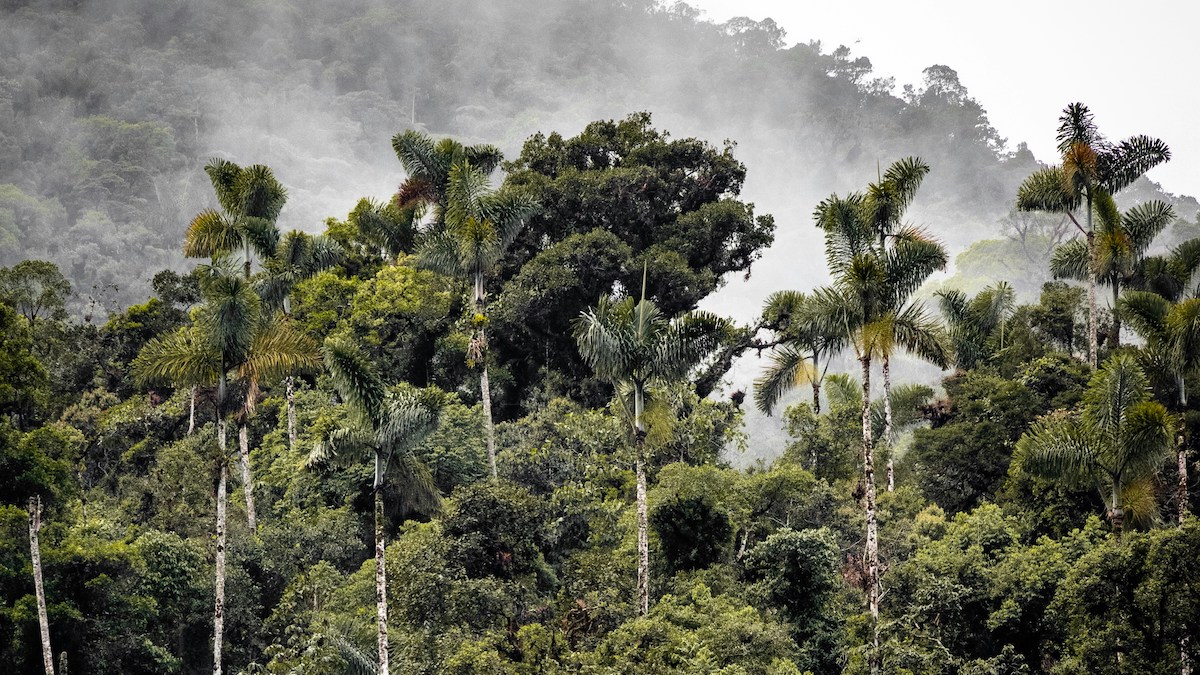Research & Developments is a blog for brief updates that provide context for the flurry of news that impacts science and scientists today.
An analysis of 20 years of health data in eight Amazonian countries, published today in Communications Earth and Environment, shows that protecting Indigenous-managed forests may help reduce various kinds of disease, including fire-related respiratory diseases and illnesses spread by animals.
The results are further evidence of the importance of ensuring Indigenous communities have land sovereignty and the tools to maintain healthy forests, the paper’s authors said.
“Ensuring Indigenous communities have strong rights over their lands is the best way to keep forests and their health benefits intact.”
“Protecting more forest areas under Indigenous people’s management could significantly reduce atmospheric pollutants and improve human health outcomes,” the authors wrote.
Deforestation in the Amazon often occurs via clear-cutting, a practice by which nearly all trees and vegetation in an area are cut down, left to dry, and burned. Smoke and especially tiny particulate matter (PM2.5) from these fires makes those living in the Amazon sick with respiratory and cardiovascular illnesses: In the Brazilian Amazon, for example, deforestation fires were responsible for 2,906 premature deaths each year, on average, between 2002 and 2011.
Zoonotic and vector-borne diseases, such as Chagas disease, malaria, hantavirus, rickettsia, and spotted fevers also affect the estimated 2.7 million Indigenous people living in the Amazon.
According to the researchers’ analysis of disease incidence and landscape in 1,733 Amazonian municipalities, Indigenous-managed forests seem to mitigate each form of disease (fire-related, zoonotic, and vector-borne) in some cases, depending on the characteristics of the surrounding land.
The decades of data revealed that Indigenous territories were able to mitigate the impacts of PM2.5 on fire-related diseases when those territories were part of municipalities with high forest cover. Indigenous territories also decreased the risk of zoonotic and vector-borne diseases when those territories covered more than 40% of the municipality.
The effects were more pronounced when Indigenous territories were legally protected. The results may be explained by the fact that Indigenous territories have previously been linked to decreased deforestation (and therefore fewer clear-cutting fires) as well as decreased biodiversity loss, which previous research suggests may reduce the transmission of pathogens.
Related
• Deforestation Threatens Public Health. Securing Indigenous Land Rights Can Help, Researchers Find
• Well-Preserved Amazon Rainforest on Indigenous Lands Can Protect People from Diseases, Study Finds
• Read the Paper: Indigenous Territories Can Safeguard Human Health Depending on the Landscape Structure and Legal Status
In municipalities with fragmented forests or low forest cover, though, Indigenous territory was less effective in mitigating disease risk.
“Indigenous forests in the Amazon bring health benefits to millions,” said Paula Prist, a biologist at the International Union for Conservation of Nature and Natural Resources and coauthor of the new study, in a statement. “Ensuring Indigenous communities have strong rights over their lands is the best way to keep forests and their health benefits intact.”
In Brazil, about a third of Indigenous territories lack a formal legal title even though Brazilian law requires the government to provide one, according to Inside Climate News.
This year’s Conference of the Parties, or COP30, an annual UN climate change conference, will be held in the Amazon rainforest in Belem, Brazil. There, deforestation and ecological health are expected to be major topics of discussion.
—Grace van Deelen (@gvd.bsky.social), Staff Writer
These updates are made possible through information from the scientific community. Do you have a story about science or scientists? Send us a tip at [email protected].


